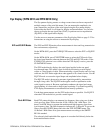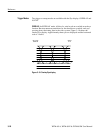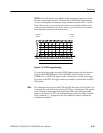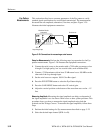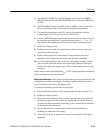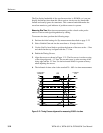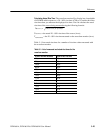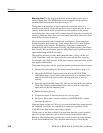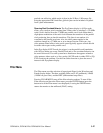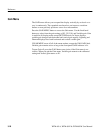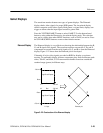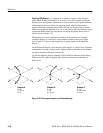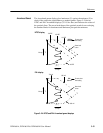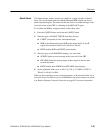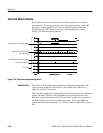
Reference
WFM 601A, WFM 601E & WFM 601M User Manual
3–27
genlock can add noise, which results in jitter in the 10 Hz to 1 kHz range. By
using the appropriate BW Limit filter, genlock jitter can be included or rejected
from a jitter measurement.
Observing Word Correlated Behavior. The Eye Pattern display in 10-Eye mode
allows you to analyze word correlated jitter. When video is serialized, a 270 MHz
serial clock is derived from the 27 MHz rate parallel word clock. Often there is
slight phase modulation of the serial clock between the transitions of the parallel
clock producing jitter at data-bit transitions. This jitter is not random; it is
correlated to the parallel word rate. Also, the video pattern applied to the
serializer changes at a 27 MHz rate or at an integer fraction of this rate. Any
video pattern related effects in the serial system typically appear at fixed data-bit
locations with respect to the parallel word.
In the Eye display10-EYE mode, the trigger is on the parallel word boundaries,
with 10 Eyes shown per sweep. Parallel word and tv-line correlated behavior can
be seen in this mode. If a serial system has a disturbance that appears related to
video patterns, either word or tv-line, use the 10-EYE mode in either EYE or EQ
EYE to analyze the problem. Use the Line Select function to place the area of
interest in the Eye pattern display.
Filter Menu
The Filter menu provides selection of input signal filters for the Waveform and
Parade display modes. The three available filters are FLAT (unfiltered), LPASS
(1 MHz low pass filter), and the DIFF (differentiated steps filter).
Pressing CLEAR MENU turns off the filter selection readout. To turn off the
Filter selection and leave the Filter menu, press the FILTER button (press the
button twice if the Filter menu is not displayed). Leaving the FILTER menu
returns the monitor to the unfiltered (FLAT) setting.



